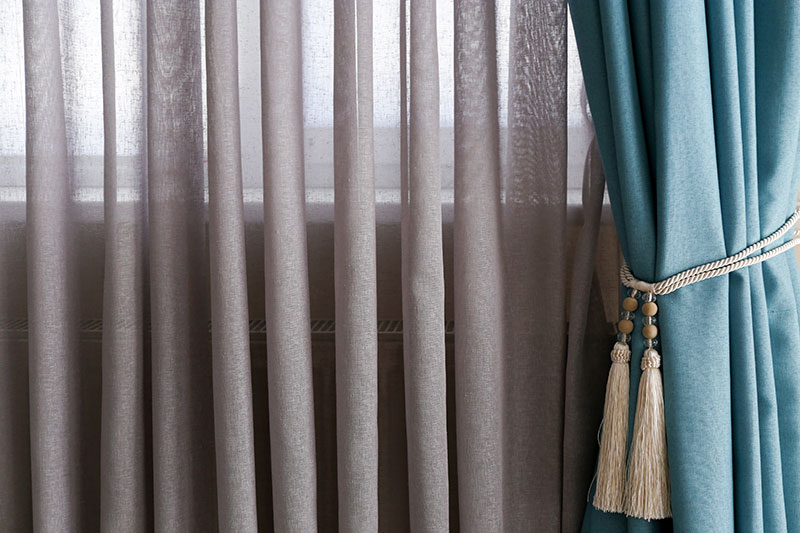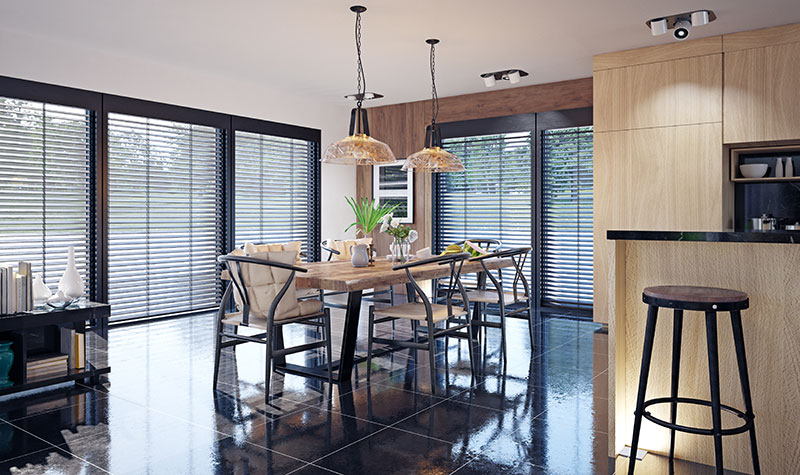Advertisement
Window treatments can change the entire look and feel of a room and make it appear well put together. But finding the right option for every area in your home can be overwhelming, especially if you’re doing it for the first time. This is because you have to consider some factors prior to making a purchase.
First, there’s the style, design, and décor of your home to think about. Second, there’s a variety of window treatments out there to choose from. Navigating such matters to heighten the visual appeal of a room can be stressful. But don’t worry because this guide is meant to help you select the most suitable window treatment regardless of the room you’d like to spruce up.
Know Your Window Treatment Options
Before figuring out which window treatment would be best for which room, look at the options available to you:
- Curtains: These are lightweight fabrics hung over the window on rods, and they can be kept open with the use of a holdback. They come in either solid colors or patterns.
- Drapes: This type of window treatment is quite similar to curtains as they’re also made from fabric. The only difference is that drapes are usually lined and heavy.
- Blinds: This is a window treatment style with vertical or horizontal wood, metal, plastic, or vinyl slats. Blinds are held together by a cord that’s also used to open or close them. Although you’ll find several types on the market, Venetian blinds are undoubtedly the most popular ones due to their ease of use, durability, and classic appearance.
- Shutters: Like blinds, these are made of horizontal wooden slats held together by a frame. They have a wooden bar placed at the center to unify the slats and allow for privacy control. While they’re attached to the window, you can fold them away to let maximum light come through.
- Shades: These are fabric treatments attached to a rod at the top of the window—similar to curtains—that you can raise or lower using a cord.
Each of these has pros and cons, and they diffuse light in various ways. You have to review them further to determine which one can meet your needs and preferences.
Determine The Treatment’s Purpose

There are many reasons to get window treatments, so take your time in thinking about what your goal is for doing so. This is one of the most important considerations you’ll make during the selection process. Here are some of the reasons other homeowners purchase window treatments:
- Privacy: Some areas, such as bathrooms and bedrooms, have to be kept private around the clock. Go for window treatments that’ll cover the entire window and offer flexibility when it comes to adding privacy.
- Light control: Window treatments play a major role in a room’s lighting, which has an impact on the temperature and visibility in the space. It wouldn’t make sense to invest in one that’s transparent if you want to keep your house cool or one that’s opaque if you’re after more natural light inside your home.
- Aesthetics: When selecting window treatments for any room, your choice should complement the overall décor and vibe of the rest of the home. You want to create a space that’s cohesive. Whether it’s contemporary, rustic, traditional, or minimalist, take into account your home’s design and decide which treatment would work best for it.
Consider The Location Of The Window
Every room has specific needs that can only be satisfied with a particular type of treatment. Check out the recommendations below for the most important rooms on your property:
- Bedroom: This area requires controlled light and temperature to achieve a cozy, relaxing feel that’ll allow you to rest and get adequate sleep. Privacy is an equally significant factor for window treatments here. Some of the best options for this room are curtains and drapes. You can opt for blackout drapes or curtains for excellent light and privacy control, especially at night.
- Kitchen: One thing that the kitchen needs is good lighting. After all, you don’t want to be cutting ingredients and working with hot pans and pots in a dim environment. In addition, spillages and high temperatures are common in kitchens. The most suitable window treatment, therefore, is one that’s durable, easy to maintain, and flexible. Shutters, blinds, and shades are advisable for this room.
- Living room: The living room requires window treatments that serve aesthetic and functional purposes at the same time since they’ll contribute to the first impression guests would have on your home. For functionality, look for something that can filter light to protect you from direct heat and sunlight while still giving you a good view of the outside. Solar shades are among the most recommended living room window treatment options.
- Bathroom: Because of high levels of humidity in this area, you need to pick a window treatment that’s moisture-resistant and long-lasting. It also needs to offer maximum privacy. You can consider fitting faux wood shades or blinds as well as vinyl shutters.
Takeaway
When choosing window treatments, apart from looking into the factors above, see to it that you take the right measurements for your windows. This is how you’ll know the correct dimensions for blinds or the proper length of curtains and drapes. Measuring would also save you time and money since you can avoid returning or replacing the item you’ve bought should it be too big or too small for your window.
Hopefully, this simple guide has shed some light on the process of getting window treatments and will help you pick the best options for your home.

